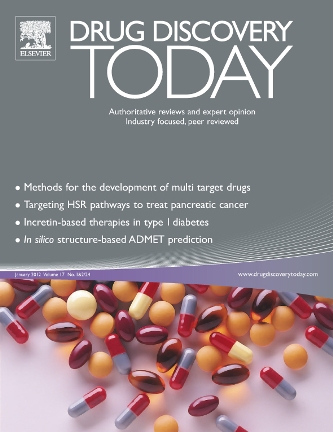Disruptions in bioactivity driven by dose: a challenge for drug discovery
IF 7.5
2区 医学
Q1 PHARMACOLOGY & PHARMACY
引用次数: 0
Abstract
Dose-driven disruptions in bioactivity challenge traditional, structure-focused drug discovery, which often overlooks effects beyond structural factors. Whereas classical dose–response describes quantitative changes in the magnitude of a given effect, evidence shows that many compounds also display biphasic or inverted dose–response profiles and, by extension, dose-dependent shifts in activity type. These phenomena can cause abrupt potency transitions, or even qualitative activity switches, akin to structural activity cliffs, but driven by concentration. Incorporating such effects into activity prediction models (APMs) requires nonlinear modeling, biologically contextualized data sets, and biomacromolecule-focused classification. Recognizing that biological systems exhibit both gradual dose–response behaviors and disruptive, concentration-dependent activity switches will enhance predictive accuracy and guide the development of mechanism-informed drug discovery pipelines.
剂量驱动的生物活性中断:药物发现的挑战。
剂量驱动的生物活性中断挑战了传统的以结构为中心的药物发现,这种发现往往忽略了结构因素以外的影响。虽然经典的剂量反应描述了给定效应的大小的定量变化,但有证据表明,许多化合物也表现出双相或反向的剂量反应曲线,并引证为活性类型的剂量依赖变化。这些现象可能导致突然的效力转变,甚至是定性活动切换,类似于结构活动悬崖,但由浓度驱动。将这些效应纳入活性预测模型(APMs)需要非线性建模、生物学背景数据集和以生物大分子为重点的分类。认识到生物系统既表现出渐进的剂量反应行为,又表现出破坏性的、浓度依赖的活性开关,将提高预测的准确性,并指导机制信息药物发现管道的发展。
本文章由计算机程序翻译,如有差异,请以英文原文为准。
求助全文
约1分钟内获得全文
求助全文
来源期刊

Drug Discovery Today
医学-药学
CiteScore
14.80
自引率
2.70%
发文量
293
审稿时长
6 months
期刊介绍:
Drug Discovery Today delivers informed and highly current reviews for the discovery community. The magazine addresses not only the rapid scientific developments in drug discovery associated technologies but also the management, commercial and regulatory issues that increasingly play a part in how R&D is planned, structured and executed.
Features include comment by international experts, news and analysis of important developments, reviews of key scientific and strategic issues, overviews of recent progress in specific therapeutic areas and conference reports.
 求助内容:
求助内容: 应助结果提醒方式:
应助结果提醒方式:


